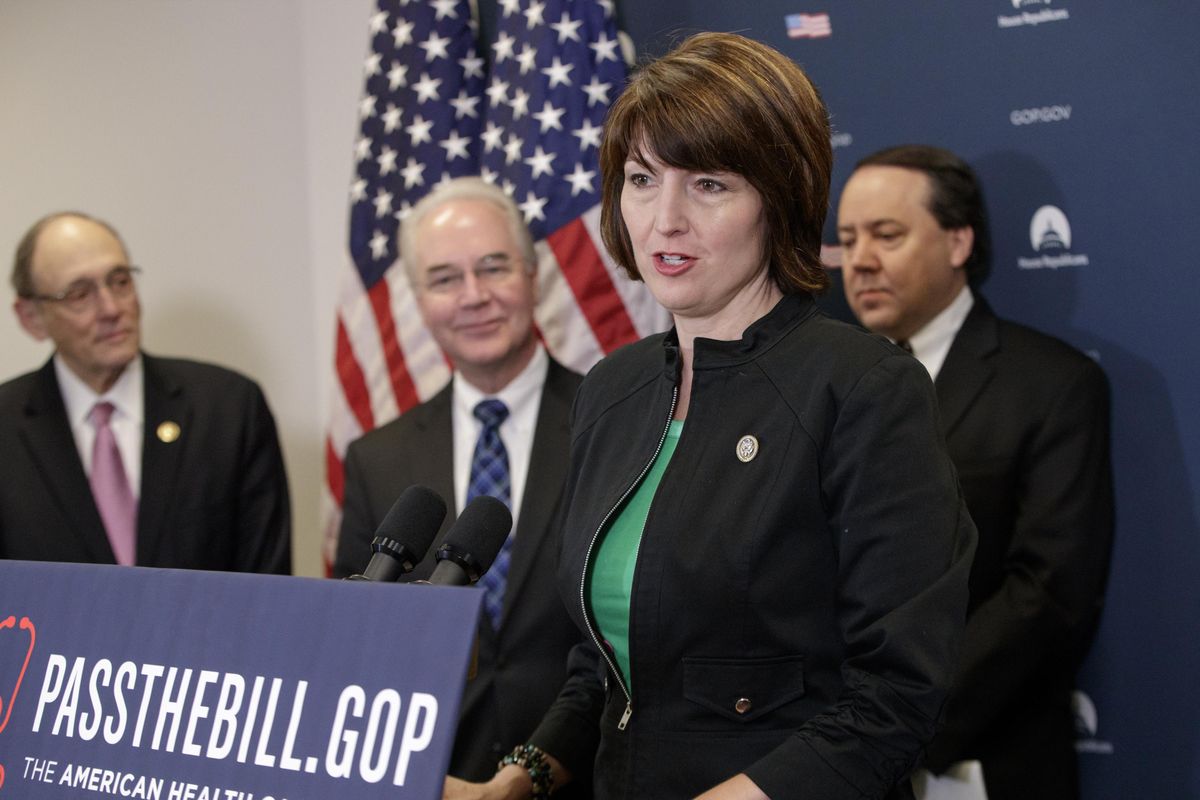Democratic poll lauded by Lisa Brown; Cathy McMorris Rodgers team skeptical

An internal Democratic poll has challenger Lisa Brown running neck-and-neck with U.S. Rep. Cathy McMorris Rodgers, prompting optimism from the left and skepticism from the right.
The poll, conducted by the Democratic Congressional Campaign Committee, found the congresswoman held a 4-percentage point edge over Brown among Eastern Washington residents likely to vote in November’s election. That’s within the poll’s margin of error, and had Brown claiming the gap was narrowing on social media.
“Competitive race in the 5th!” Brown tweeted Tuesday night, after the results of the poll were published online by the Seattle Post-Intelligencer.
The Democratic committee, which announced in the fall its intentions to back Brown’s bid to become the first Democrat to represent the district since Tom Foley was defeated in 1994, declined to release additional data about the poll beyond a one-page summary of the findings. The organization said the results were weighted to reflect the likely demographics of Eastern Washington voters in 2018, but did not release the questions that were asked of poll respondents.
McMorris Rodgers’ team released a statement Wednesday critical of the poll that echoed scrutiny of another poll of Washington voters, released in early January, that indicated a generic Republican held the same 4-point advantage over a generic Democrat.
“Nancy Pelosi pushing a bogus poll in support of her handpicked, ultra-liberal candidate is not surprising,” said Ashley Stubbs, a McMorris Rodgers campaign spokeswoman, in a statement.
The committee is headed by Rep. Ben Ray Lujan of New Mexico, though the House minority leader is reported to have raised more than $47 million for the organization last year, according to the national newsmagazine Politico. The DCCC serves as the official party committee pushing for election of Democrats to the House of Representatives, and that’s likely why the organization is releasing its poll now, said Cornell Clayton, director of the Thomas S. Foley Institute of Public Policy and Public Service at Washington State University.
“They have every incentive right now to paint the most favorable light on the race,” he said.
The summary emphasizes that Brown performed well among voters older than 45, an anomaly for the usual Democratic candidate, Clayton said.
“You would expect older voters to skew Republican, so that shows there’s something interesting going on there. My guess is it’s the sample they used,” Clayton said. The results of the poll would indicate the Republican performing better among younger voters, he added.
Without additional information about how the poll was conducted, and given the length of time until the election, the results should be viewed with some skepticism, Clayton said.
“I would say the big perspective is it’s way too early for these polls to mean a lot,” he said.
Brown’s team noted that the 4-percentage point gap is much closer than any Democrat has come to McMorris Rodgers, whose smallest margin of victory to retain her seat in the House of Representatives is 12.8 percent, which came in her 2006 race against Peter Goldmark. As of Thursday, the election is 264 days away.
The poll was conducted Feb. 3 and included 414 likely voters in the 2018 election from the district, according to the Democratic committee’s summary of the findings. That included what they called “a standard blend of live and automated calls.”
According to filings made with the Federal Election Commission, McMorris Rodgers commissioned her own poll in October of last year. Her campaign did not release any data of their own in response to questions for this story.